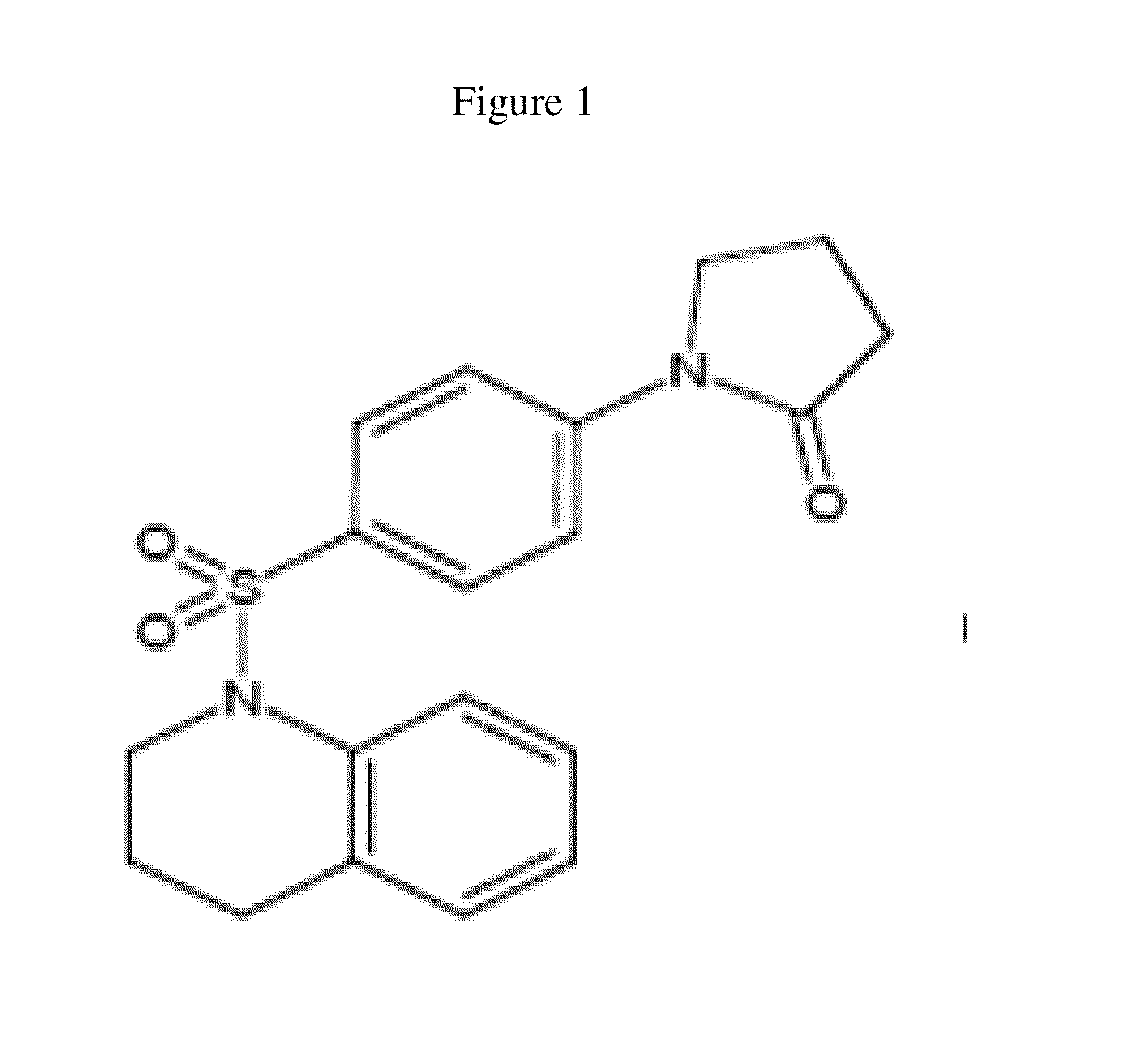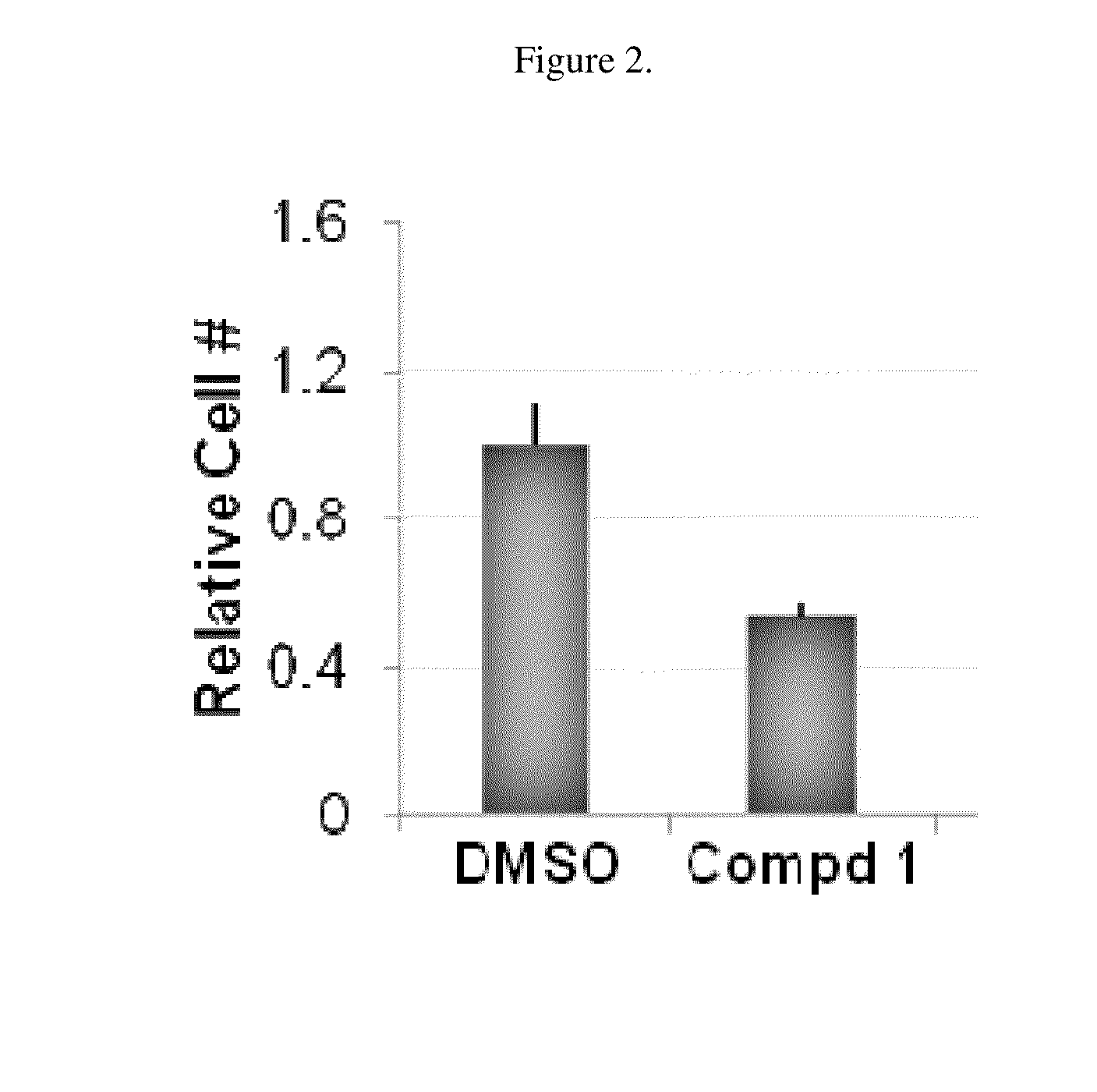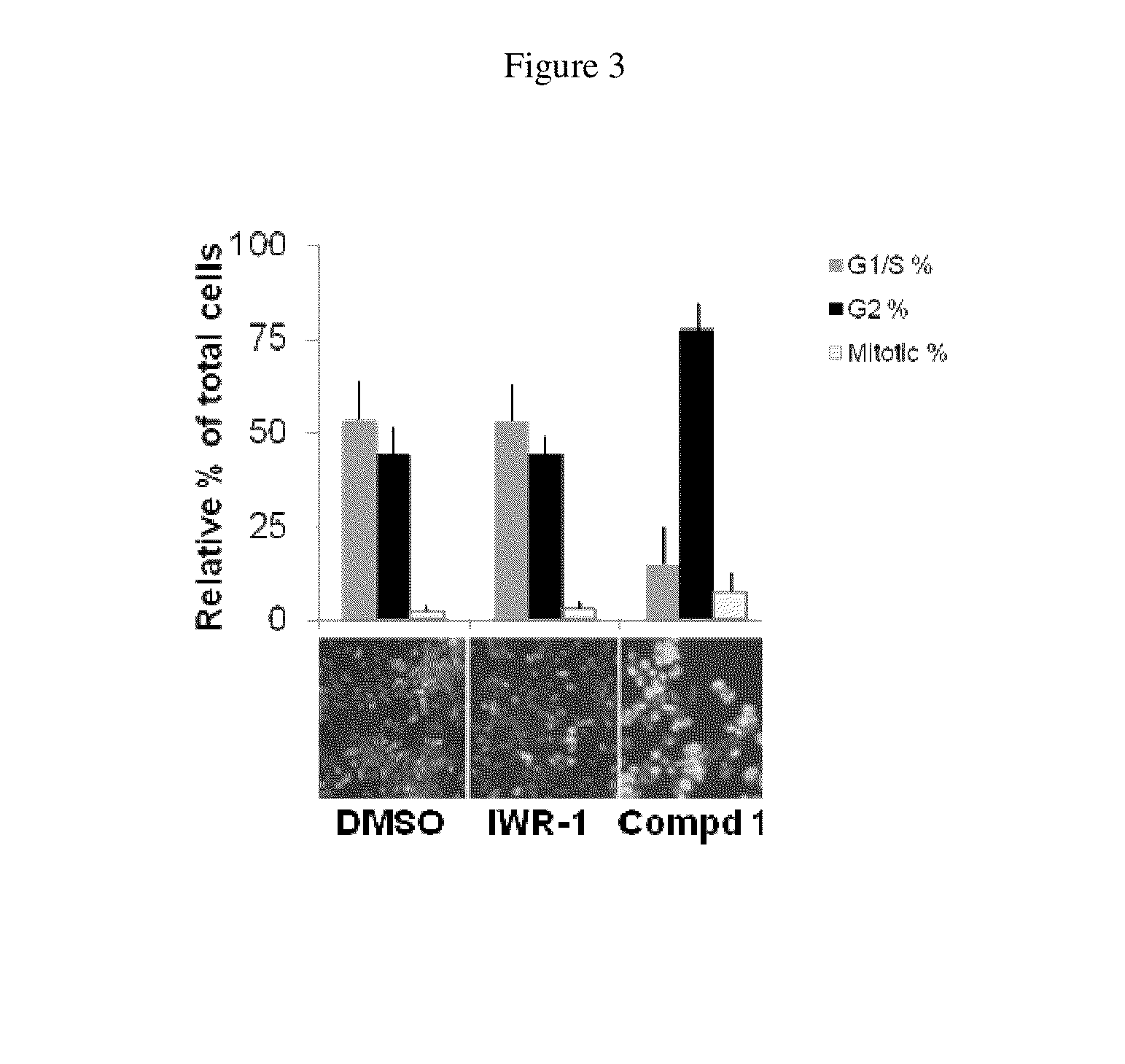Compounds for inhibition of cancer cell proliferation
a cancer cell and inhibitory technology, applied in the field of small molecule compounds, can solve the problems of untoward gastrointestinal and hematologic side effects, cancer-related deaths, and limited cancer treatment options, and achieve the effect of promoting apoptosis
- Summary
- Abstract
- Description
- Claims
- Application Information
AI Technical Summary
Benefits of technology
Problems solved by technology
Method used
Image
Examples
example 1
Biological Assays
[0125]“Hit” 1 (FIG. 1) was identified as a Wnt inhibitor in a high-throughput screen of a library of 74,000 compounds using a cell-based Wnt-luciferase reporter assay as a readout of Wnt transcriptional activity. Compound 1 inhibited Wnt transcriptional activity in a dose-dependent manner with EC50 of ˜25 nM similar to the well-characterized Wnt inhibitor, IWR-1. Wnt transcriptional activity was monitored in HEK-293T cells using a luciferase-based Wnt reporter (SuperTOPFlash) stimulated by Wnt3a conditioned media. The selectivity of 1 was confirmed in secondary assays by the observation that 25, a structural analog of 1 did not inhibit Wnt transcriptional activity. The selectivity of 1 for the Wnt pathway was shown because 1 did not alter the transcriptional activity of either the NF-B or the TGF-signaling pathways, two other predominant cellular signaling pathways.
[0126]Compound 1 inhibited the endogenous Wnt pathway as determined by a decrease in mRNA levels of ca...
example 2
General Synthetic Procedures for Obtaining Compounds of Formula I
[0134]The sulfonamide-based compounds of general structure I:
may be synthesized according to the following Schemes:
[0135]Compound I: To a microwave vial, 1 equiv. of the sulfonyl chloride, 1.5 equiv. of the appropriate amine, 1.2 equiv. of triethylamine were added to acetonitrile (0.4 M). The vial was sealed and heated at 100° C. and microwaved for 20 min. The reaction mixture was diluted with dichloromethane and washed 2× water, 1× brine. The organic was dried over Na2SO4. The crude mixture was purified by silica gel chromatography.
[0136]Compound I.
[0137]10 mmol of phenylhydrazine hydrochloride or aniline, 10 mmol 1,3-dibromopropane or 1,4-dibromobutane, 10 mmol potassium carbonate and 10 mL water were added to a microwave vial and heated at 130 C for 30 min. The mixture was extracted 4× ethyl acetate. The organic layers were combined, dried over Na2SO4 and concentrated in vacuo to give a yellow residue. The crude mix...
example 3
Functional Activity of Compounds of Structure I
[0209]The potency of Wnt inhibition by several compounds of structure I using the above-described testing methods was determined. Approximately 50 sulfonamides were synthesized and tested. Table 1 lists the functional activity of some of the compounds of structure I in the Wnt inhibition assay.
TABLE 1ARelative potency for Wnt inhibition by compounds of structure I.Compd #PotencyMLG-III-53A++++1+++2++++3NA4++++5++++6+++7++++8+++9+11++++12++++13+14+++17+18+19+20+21+22+23+24+25+26+27+28+++31++++32++++33+34+++aAll the compounds were characterized by LRMS and / or 1H NMR.bRelative Wnt inhibition potency was based on compound IWR-1 possessing greatest inhibitory potency; +++++: >80% potency compared to IWR-1; ++++ between 60 to 80% potency compared to IWR-1; +++ between 40 to 60% potency compared to IWR-1; ++: NA, not available.
[0210]As observed from the data presented in Table 1, both free bases and salts gave significant Wnt inhibition potenc...
PUM
| Property | Measurement | Unit |
|---|---|---|
| time | aaaaa | aaaaa |
| time | aaaaa | aaaaa |
| time | aaaaa | aaaaa |
Abstract
Description
Claims
Application Information
 Login to View More
Login to View More - R&D
- Intellectual Property
- Life Sciences
- Materials
- Tech Scout
- Unparalleled Data Quality
- Higher Quality Content
- 60% Fewer Hallucinations
Browse by: Latest US Patents, China's latest patents, Technical Efficacy Thesaurus, Application Domain, Technology Topic, Popular Technical Reports.
© 2025 PatSnap. All rights reserved.Legal|Privacy policy|Modern Slavery Act Transparency Statement|Sitemap|About US| Contact US: help@patsnap.com



